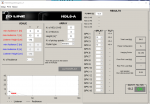Looking at an install for a room that is about 80' wide and 50' deep. Maybe 200 people, max.
Would 4 RCF HDL6a over 1 Yorkville LS2100P per side cover that?
I've heard the Yorkvilles, but not the RCFs. Any experience with these speakers here?
Would 4 RCF HDL6a over 1 Yorkville LS2100P per side cover that?
I've heard the Yorkvilles, but not the RCFs. Any experience with these speakers here?


